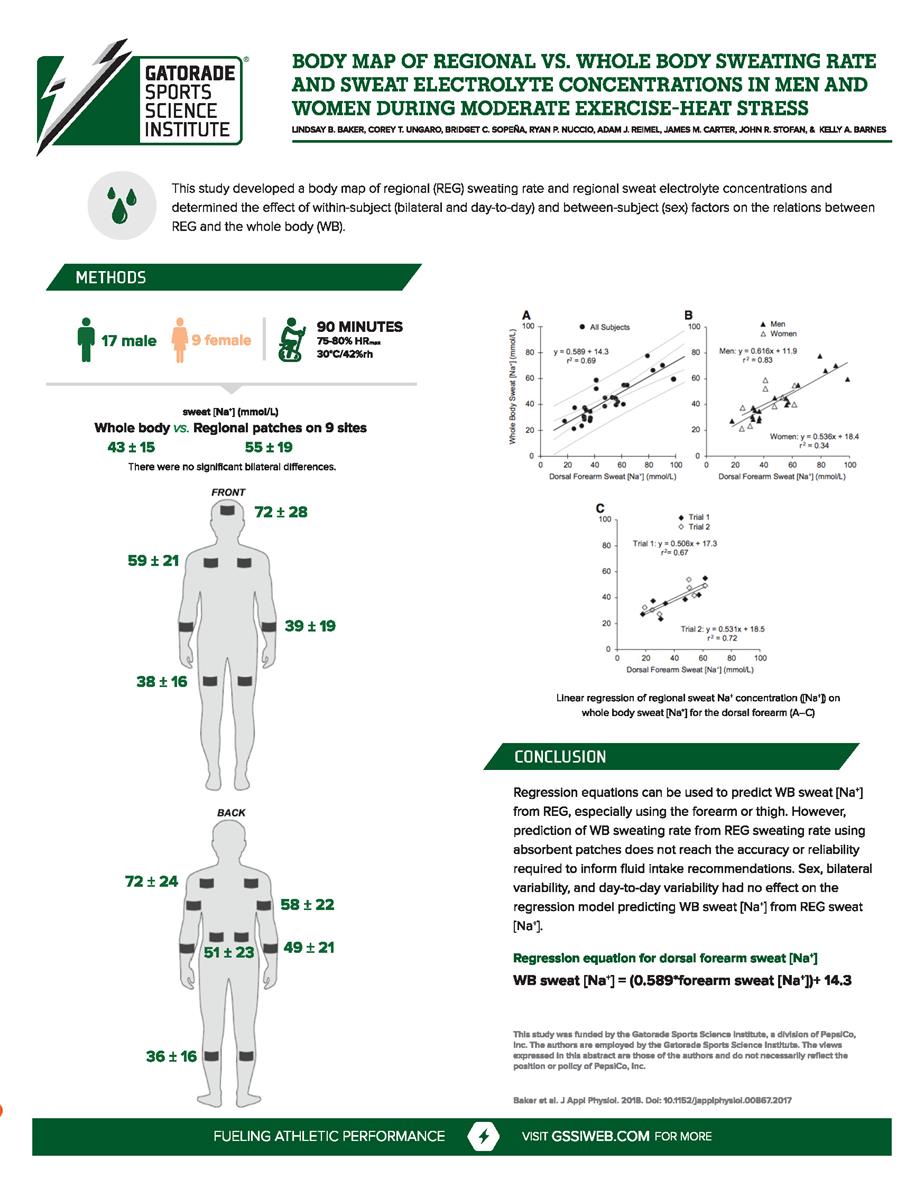Abstract
This study determined the relations between regional (REG) and whole body (WB) sweating rate (RSR and WBSR, respectively) as well as REG and WB sweat Na+ concentration ([Na+]) during exercise. Twenty-six recreational athletes (17 men, 9 women) cycled for 90 min while WB sweat [Na+] was measured using the washdown technique. RSR and REG sweat [Na+] were measured from nine regions using absorbent patches. RSR and REG sweat [Na+] from all regions were significantly ( P < 0.05) correlated with WBSR ( r = 0.58-0.83) and WB sweat [Na+] ( r = 0.74-0.88), respectively. However, the slope and y-intercept of the regression lines for most models were significantly different than 1 and 0, respectively. The coefficients of determination ( r2) were 0.44-0.69 for RSR predicting WBSR [best predictors: dorsal forearm ( r2 = 0.62) and triceps ( r2 = 0.69)] and 0.55-0.77 for REG predicting WB sweat [Na+] [best predictors: ventral forearm ( r2 = 0.73) and thigh ( r2 = 0.77)]. There was a significant ( P < 0.05) effect of day-to-day variability on the regression model predicting WBSR from RSR at most regions but no effect on predictions of WB sweat [Na+] from REG. Results suggest that REG cannot be used as a direct surrogate for WB sweating responses. Nonetheless, the use of regression equations to predict WB sweat [Na+] from REG can provide an estimation of WB sweat [Na+] with an acceptable level of accuracy, especially using the forearm or thigh. However, the best practice for measuring WBSR remains conventional WB mass balance calculations since prediction of WBSR from RSR using absorbent patches does not meet the accuracy or reliability required to inform fluid intake recommendations. NEW & NOTEWORTHY This study developed a body map of regional sweating rate and regional (REG) sweat electrolyte concentrations and determined the effect of within-subject (bilateral and day-to-day) and between-subject (sex) factors on the relations between REG and the whole body (WB). Regression equations can be used to predict WB sweat Na+ concentration from REG, especially using the forearm or thigh. However, prediction of WB sweating rate from REG sweating rate using absorbent patches does not reach the accuracy or reliability required to inform fluid intake recommendations.

To download this infographic - please click here
J Appl Physiol (2018).124:1304-1318.




